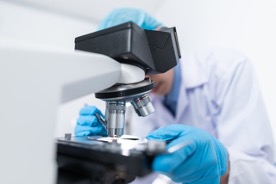Mark Pugh is the CEO of Avondale Pharmaceuticals. In the article below, Mark Pugh explains the initiatives being taken on across the board by the Pharma industry in order to reduce the environmental impact of operations.
The pharmaceutical industry is estimated to produce 52 million tons of carbon emissions a year—or 55% more than the automotive sector, despite its smaller market. Mark Pugh of Avondale Pharmaceuticals explains that to comply with the reduction targets of The Paris Agreement, it needs to reduce emissions by at least 59%.
This article looks at the sustainability efforts in the pharmaceutical industry, starting from changes in production down to its distribution and consumer education.
1. Green chemistry
Mark Pugh of Avondale Pharmaceuticals reports that green chemistry reviews the entire production cycle to minimize wasted resources and production of hazardous chemical waste. This includes:
Reducing waste production
“No atom should go to waste.” Through better technology and processes, pharmaceutical manufacturers are working maximize materials so that the final product contains as much of the original material as possible.
Avoiding toxic chemical compounds
Pharmaceuticals can use or design compounds that are less toxic to people and the environment, according to Mark Pugh of Avondale Pharmaceuticals. This includes using safer solvents and avoiding the use of separating agents and other chemicals.
Companies can also design chemicals that degrade in a way that it releases less harmful substances after use and disposal.
Improving energy efficiency
Greener manufacturing methods lower energy requirements by performing chemical reactions at room temperature or pressure. It also uses renewable energy sources such as wind, solar, hydroelectric and biomass.
Avoiding waste
Chemical derivatives often use additional reagents and generate more waste. Mark Pugh of Avondale Pharmaceuticals notes that manufacturers are working to avoid waste by replacing these with catalysts, which can be used several times.
Shortening processing
Before, sertraline (an anti-depressant) had to go through 3-step sequence process. The new, eco-friendly process uses ethanol to eliminate the need for distillation and recovery of toxic substances—and shorten the synthesis pathway to just 1 step.
Paclitaxel, a cancer treatment drug, used to require 11-step synthesis. New biotechnology techniques allowed synthesis from plant cell cultures and eliminated hazardous reagents.
2. Continuous manufacturing methods
Mark Pugh of Avondale Pharmaceuticals reports that switching from batch manufacturing to continuous manufacturing can
reduce a pharmaceutical’s carbon footprint by as much as 80%.
In batch manufacturing, the components of a drug are produced and then synthesized in separate steps. While it is cheaper to implement, batch equipment consumes more energy and has a higher risk for quality discrepancy and discarded batches—which, in turn, leads to more waste.
Continuous manufacturing, the processes are integrated and run simultaneously. This consumes less energy, eliminates steps like product isolations, and requires less transportation and storage of materials. Because of higher quality control, there is also a lower risk of chemical waste and spoiled batches.
The Royal Society of Chemistry provides a detailed analysis of how continuous processing fulfils the promise of “green chemistry” at different stages of production.
3. Sustainable cold-chain shipping
Mark Pugh of Avondale Pharmaceuticals explains that cold-chain shipping is the transport of temperature-sensitive products, such as some drugs and vaccines. It typically involves thermal packaging and transport refrigeration units (TRU), both of which generate waste and carbon emissions.
Environmentally friendly packaging
Pharmaceuticals are working to replace bubble wrap and other plastic packaging with recycled, reusable, renewable, or biodegradable materials. Examples include:
- Reusable gel refrigerants
- Insulated packaging made from recycled materials
- Plant-based plastic containers
- Recycled or biodegradable expanded polystyrene (EPS) foam
- Recycled post-industrial paper fibers
TRUs
Mark Pugh of Avondale Pharmaceuticals reports the typical TRU produces 8 tons of carbon emissions a year, or four times more than a car. The only way to lower the environmental impact is to use green, renewable fuels. This includes:
- hydrotreated vegetable oil
- compressed or liquified natural gas
- liquified petroleum gas (LPG), especially those made from biomethane
Hydrotreated vegetable oils are made from waste materials and produce 40% to 90% less greenhouse gas emissions than regular diesel. LPG-fueled vehicles produce 50% less nitrogen oxides than gas and 20% less than diesel.


Localized manufacturing
Pharmaceuticals can also look for ways to simplify the supply chain and reduce the need for storage and shipment (i.e, getting local suppliers or re-shoring steps in the manufacturing process). The shorter the steps between a product and its user, the smaller its carbon footprint, according to Mark Pugh.
4. Reduction and proper management of toxic waste
Pharmaceutical waste has a tremendous impact on eco-systems. An article published in the Pharmaceutical Journal shared that traces of the drug Metformin that were found in Lake Michigan
affected the gene related to fish egg production. Other studies have found traces of ibuprofen and diclofenac in otters, and link high concentration of antibiotic waste to drug-resistant bacteria.
Mark Pugh of Avondale Pharmaceuticals notes that the same article also cited a global review, which found that 631 of 713 pharmaceuticals were detected in surface waters, ground water, soil, and even drinking water.
Pharmaceutical waste is caused by excretion of drug, improper disposal, and pollution from drug manufacturers. Companies can help tackle this problem by:
- Educating their consumers on how to throw away expired medicines
- Minimizing waste by re-selling low grade solvent materials or redundant stocks back to market
- Segregating of hazardous waste (such as solvents) from general waste
- Treatment of pharmaceutical waste before disposal (i.e., adding compounds that can neutralize toxic chemicals)
Protecting the health of both people and the planet
Through better technology, more efficient processes, and a shift towards renewable energy and environmentally friendly materials, Mark Pugh of Avondale Pharmaceuticals says the pharmaceutical industry has implemented standards across the board to reduce its carbon footprint while maintaining the quality of its products.

